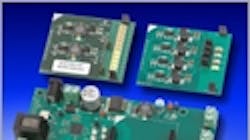EE&T News: July 13, 2010
| Wireless Version Web Version | Dont miss an issue: ADD TO YOUR SAFE SENDER LIST |
Advances in LED manufacturing
It isn't just the design features that make LEDs brighter and more efficient. Recent advances in this area owe a lot to advances in manufacturing techniques. That's why this week's Semicon West and Intersolar shows in San Francisco will, among other things, put a spotlight on fab floor technologies that boost LED brightness. You can an overview from our sister publication Machine Design. Meanwhile, send your energy efficiency news to us at [email protected]
-- Leland Teschler, Editor
FEATURED CONTENT |
A mascot the wind industry doesn't need
The annual show put on by the American Wind Energy Association is always a good place to see innovative technology for wind power. This year's event, which recently wrapped up, was no different. Regardless of what you may think about the wind industry, you must admit a lot of clever mechanical and electrical engineering goes into modern wind turbines. READ MORE
ADVERTISEMENT
The energy efficiency stress test
Promoters of the Energy Star efficiency standard got egg on their faces last year when the Government Accountability Office submitted fake products and companies for the Energy Star label. The EPA approved 15 out of 20 bogus applications. The problem was that the Energy Star rules at the time let manufacturers certify product performance themselves. There was no uninterested party verifying efficiency claims. That all changed Jan. 1 with the initiation of Energy Star's third-party certification program. Now accredited certification bodies verify claims — they've already approved 10,000 new products. READ MORE
Energy shorts
Measuring the mercury when CFLs break
Lighting facts: Same name, two different programs
Efficient Mosfets target hybrid vehicles
We are all now Holmless
Solenoids are energy misers
A six-channel LED driver
LED LIGHTING |
Driving high-brightness LEDs
The chip that drives an illumination-grade LED today must be able to dim the LED light. LEDs are driven with a constant current, where the dc current level is proportional to LED brightness. There are two methods of dimming the LED by controlling its current. The first is analog dimming, in which the LED gets dimmer in proportion to a reduction of its dc current level. The main problem is that reducing the LED current can make the LED light change color. READ MORE
ADVERTISEMENT
DM330014 LED Lighting Development Kit, at Digi-KeyProgress report: LEDs get more efficient, put out warmer light
Those interested in how solid-state lighting performs when used in recessed downlights, track lights, A-lamps, cove lights, and replacement lamps for linear fluorescents should take a look at the Round 12 results recently released for the Dept. of Energy's CALiPER (Commercially Available LED Product Evaluation and Reporting) program. One conclusion: LED light is getting warmer. READ MORE
FEATURED LINKS |
Thomas Division
Thomas provides OEM pump and compressor innovations for environmental applications with oil-less technology offerings including WOB-L® and articulated piston, diaphragm, rotary, linear, and liquid pumps.
www.gd-thomas.com
| Today's Energy Efficiency News update brought to you by: International Rectifier |
LATEST ISSUE | |
| Energy Efficiency & Technology magazine is FREE to qualified subscribers. Subscribe now! | |
FEEDBACK
| You are subscribed to this newsletter as `email` For questions concerning delivery of this newsletter, please contact our Customer Service Department at: |


